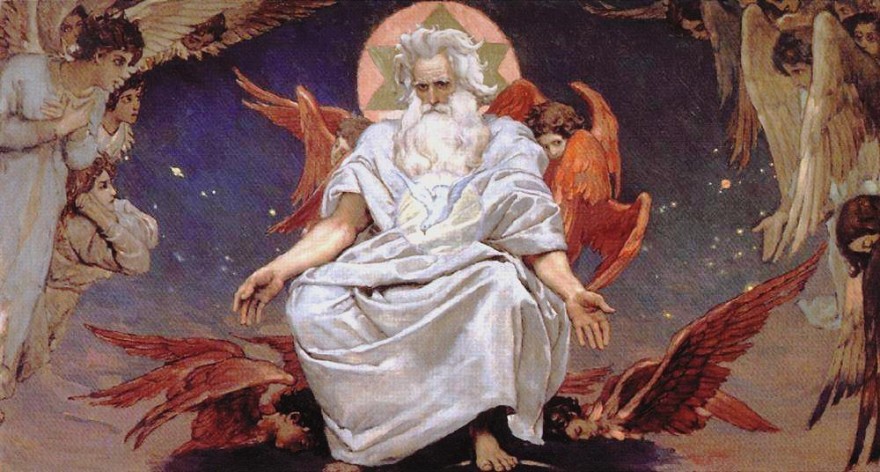God is dead. He had a good run.
He quietly passed away on Saturday afternoon, surrounded by close friends, family, and Twitter followers. God died as he lived: sending out not-at-all cryptic missives to his 2.29 million followers. He will be remembered as the leader of a major theistic cult, albeit a smaller one than the legion of Beliebers.
I come here to bury God, not to praise him. The evil that novelty Twitter accounts do lives on after them; The good is oft interred with their bones. So it is with God, who spent his final hours retweeting a young woman into his followers’ timelines. That worked out exactly as you’d imagine. Show me a God whose actions haven’t interpreted as an excuse to harass members of an out-group, however, and I’ll show you a false deity. Anyhow, God is dead and Emily Robinson is still online.
It all started out so promisingly, way back in those halcyon days of 2010. God descended to Twitter from up high, with important reflections about text boxes. He had put in the time to prepare for that day. One does not simply become God; a producing and writing gig at The Daily Show and a book deal are necessary qualifications. At least that was the case in the days of the Old Testament, before ‘favorites’ were rebranded as ‘likes’ during the great Silicon Valley conclave of 2015, and less than a year after the institutionalization of the retweet.
In the beginning, the blue rectangle was formless and empty. And I said, “Let there be text,” and there was text; and I saw that it was gd.
— God (@TheTweetOfGod) October 21, 2010
Could there be a God without retweets? “Religion has always been mediated, and it is inseparable from the forms of its mediation,” argues the theologian Jeffrey H. Mahan in his 2014 book Media, Religion, and Culture: An Introduction. “To say we are studying religion and media is only to make explicit our awareness of this inevitable connection.” Much as organized religion owes a great deal to the invention of the printing press, Twitter’s God depended on the retweet. How else were adherents to spread the gospel and demonstrate their devotion? It’s all about diffusion, really.
Do you remember the Gilbertine Order? For a time, it was the only all-English religious order. That time came between the twelfth and sixteenth centuries, admittedly, but it was a time nonetheless. As part of the English Reformation, however, the 1563 Dissolution of Lesser Monasteries Act resulted in 22 of the order’s 26 monasteries capitulating to King Henry VII. Shortly thereafter, the Gilbertine Order ceased to exist.
All of which is to say that no higher purpose can truly isolate a religious order from the context in which it operates. God, it turns out, was much more suited to the Twitter of 2010. The intervening years have seen the rise and fall (and rise?) of “parody” Twitter accounts, which stretched the limits of humor, originality, and authenticity on the platform. Moreover, amidst rising concerns over abuse, God’s habit of retweeting dissenting voices into the timelines of his followers came to symbolize the worrying interaction of default mechanics and potentially harmful behavior. And that’s leaving out the smarm. It’s hard to imagine how one could adopt God as a sobriquet and not turn out a bit smarmy, and God offered little help to those seeking to conjure that image. He laid on the smarm so thickly that it made the Tablet of Stones look like communion wafers. His last tweet, shortly after the death of Antonin Scalia, simply read “Justice.” It was nothing if not a fitting farewell.
Justice.
— God (@TheTweetOfGod) February 13, 2016
Also: God was a man. Of course he was a man.
God is survived by Twitter, which, contrary to recent reports, is not yet dead. Even in death, his follower count remains remarkably stable, though one might well wonder how long that might last. One day, we might look back at how this whole God thing (especially of the Twitter variety) reflected the values and failings of a media platform. Until then, God has a book and stage show (starring that guy from Will and Grace). A funeral service will be held on Facebook, where people go to discuss the Twitter news of a few days ago, later this week.
Header image: Viktor M. Vasnetsov – Бог Саваоф, Wikimedia Commons, Public Domain
